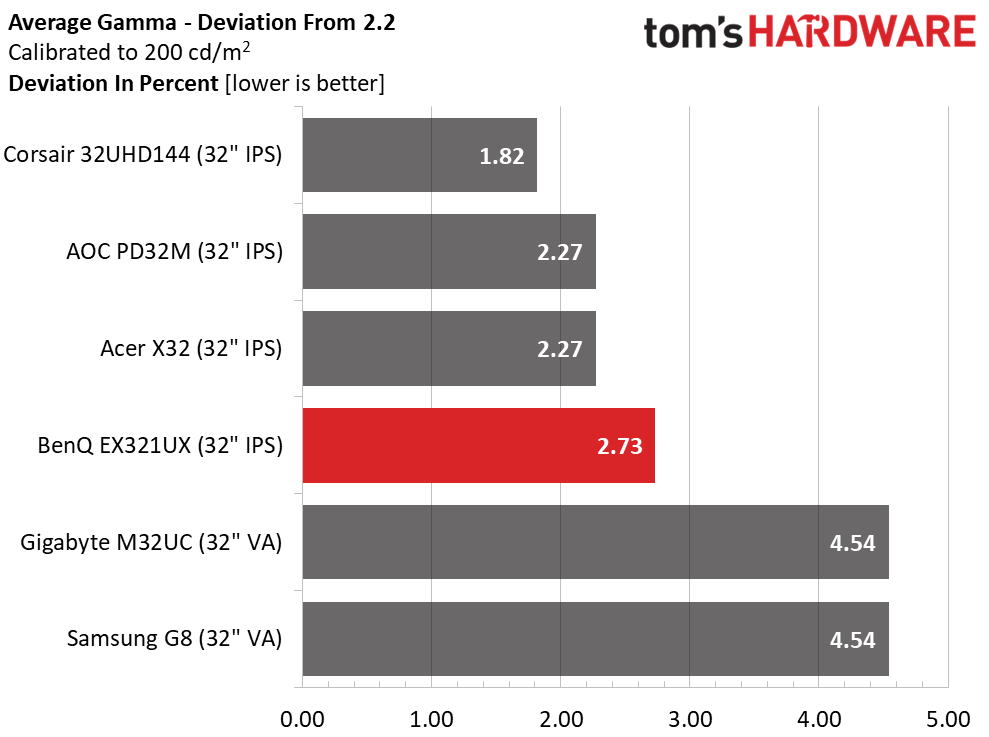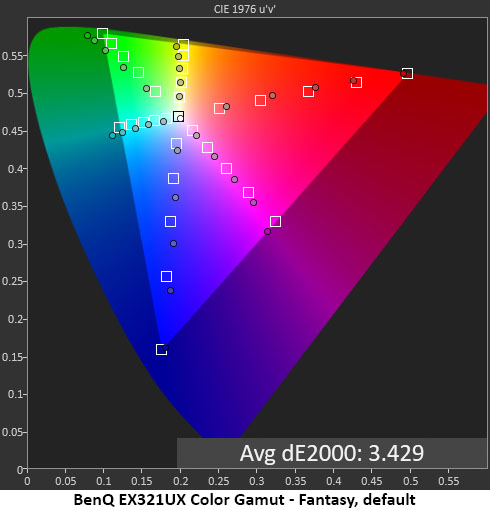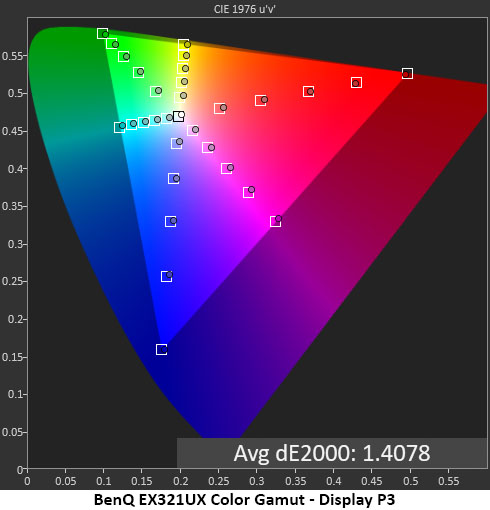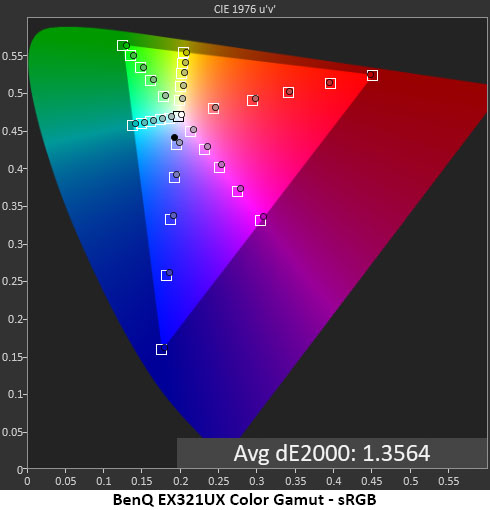Why you can trust Tom’s HardwareOur expert reviewers spend hours testing and comparing products and services so you can choose the best for you.Find out more about how we test.
Grayscale, Gamma and Color
Grayscale and Gamma Tracking
The EX321UX defaults to its Fantasy picture mode. It offers high contrast and brightness with very saturated color. It’s a good look but there are some issues that I’ll talk about now.
Our grayscale and gamma tests use Calman calibration software fromPortrait Displays. We describe our grayscale and gamma tests in detailhere.
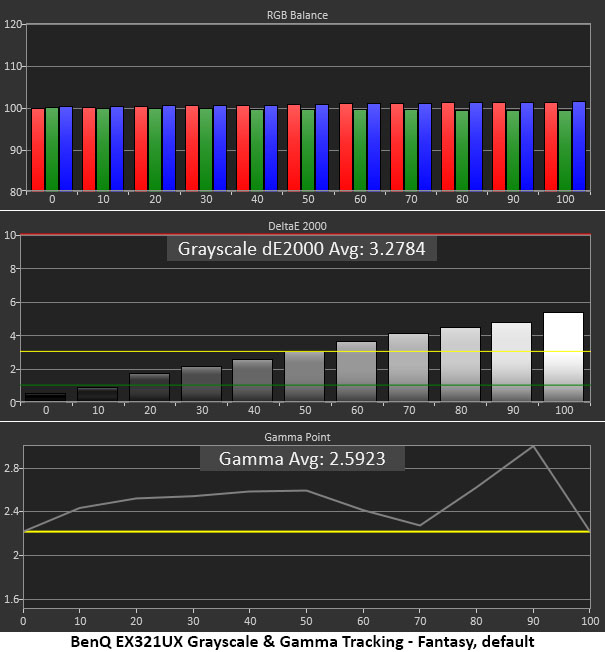
No amount of tweaking in Fantasy mode would fix the problematic gamma. It is affected by two sliders, Light Tuner and Gamma. Every combination I tried was off the mark. I went for Display P3 and there, I found happiness. Gamma is almost perfectly on the reference and grayscale tracking is without significant visible error. The sRGB mode is similar with even tighter gamma
In the Fantasy mode, grayscale tracking is reasonably close to spec with a little warmth showing up at 60% brightness and higher. This is excusable because it’s barely visible. What is more troubling is the wild gamma tracking. From 0 to 60%, it’s quite dark which will obscure some shadow detail and make mid-tones murky. Then it leaps even higher at 80 and 90% which makes highlights less impactful. There’s plenty of color saturation here but the picture doesn’t look quite right.
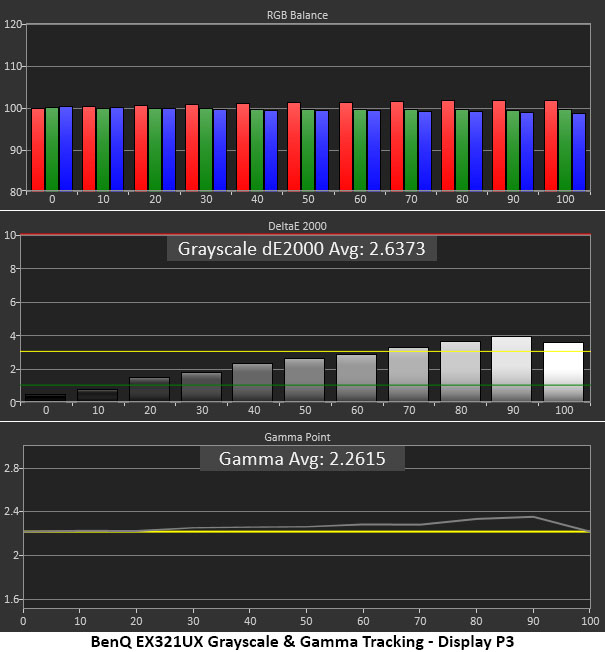
Comparisons
The grayscale error of 3.28dE in the EX321UX’s Fantasy mode isn’t too bad. The gamma tracking brooks more complaint. Switching to Display P3 brings the average error down to 2.64dE which is fine. Gamma tracking improves to a 0.19 range of values and a deviation of 2.73%. The actual value is 2.26. This is decent performance but there is room for improvement. A correct gamma mode for the other picture presets would be welcome.
Color Gamut Accuracy
Our color gamut and volume testing usePortrait Displays’Calman software. For details on our color gamut testing and volume calculations,click here.
The EX321UX’s Fantasy mode uses the full native gamut, which goes visibly beyond DCI-P3. you may see that the green primary tracks more toward Rec.2020 in hue, while it and all other colors are over-saturated. This gives the image good impact, but it is not accurate. It is a matter of personal preference.
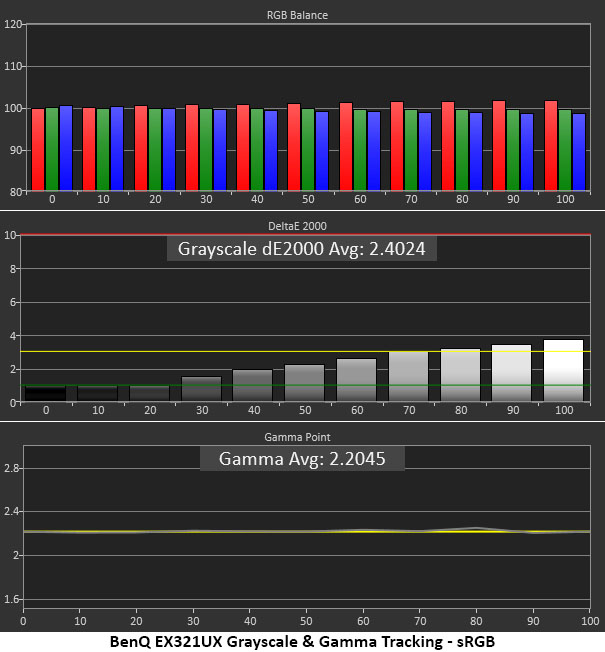
Display P3 mode has no calibration options but hits the gamut targets to perfection. There are no visible errors and only a tiny hue aberration can be seen in the magenta secondary. This is excellent performance, as is the sRGB mode, which has an equally invisible average error of just 1.36dE.
In the EX321UX’s Display P3 mode, it bests the other monitors at 1.41dE. It’s a bummer that you’re able to’t use the local dimming though. The other monitors will have more contrast in their accurate modes because they leave it available. So, the EX321UX is very color accurate but with a catch.
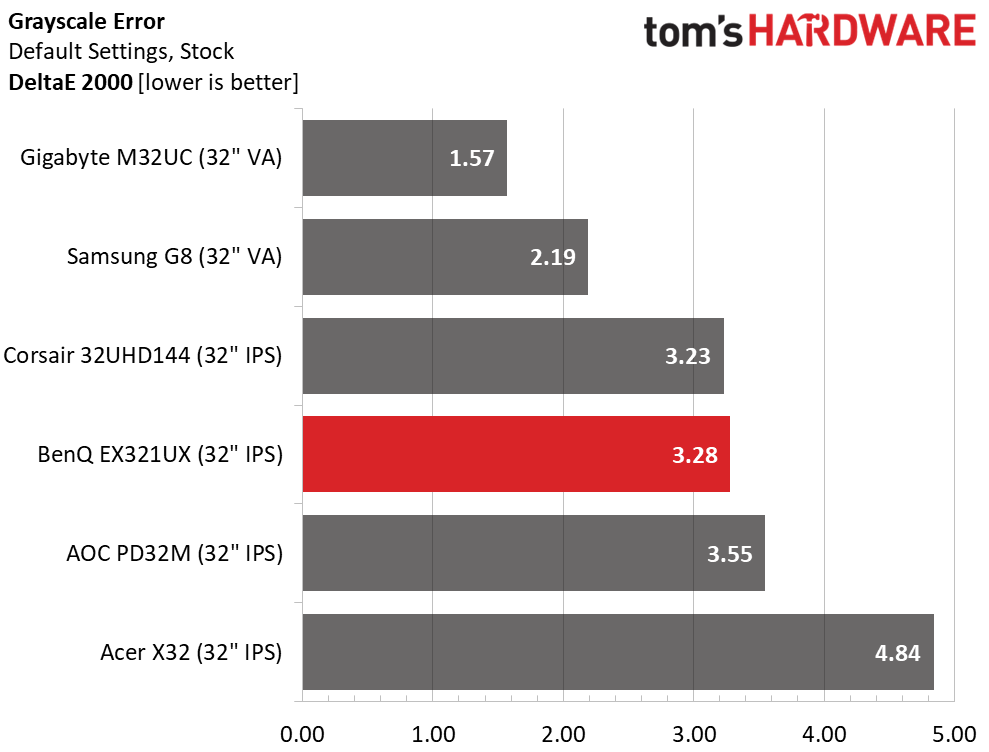
The Quantum Dot film expands the EX321UX’s color gamut to over 104% coverage of DCI-P3. While impressive, the AOC, Corsair and Acer have even greater volume. If you want the most colorful monitor available, the Acer X32 is it with a highly saturated red primary. If accuracy is your goal though, the BenQ is the better choice. It hits DCI-P3 and sRGB volumes much more closely which makes it better suited for color critical work.
Test Takeaway:BenQ always offers a correct picture mode and in the EX321UX’s case, you get two, Display P3 and sRGB. The only negative is that neither have local dimming available. For that, you must accept some gamma issues in one of the other picture modes. Though accuracy is always a good thing, the EX321UX has room for improvement. If it were to add a correct gamma option for the adjustable picture modes, that would be a homerun.
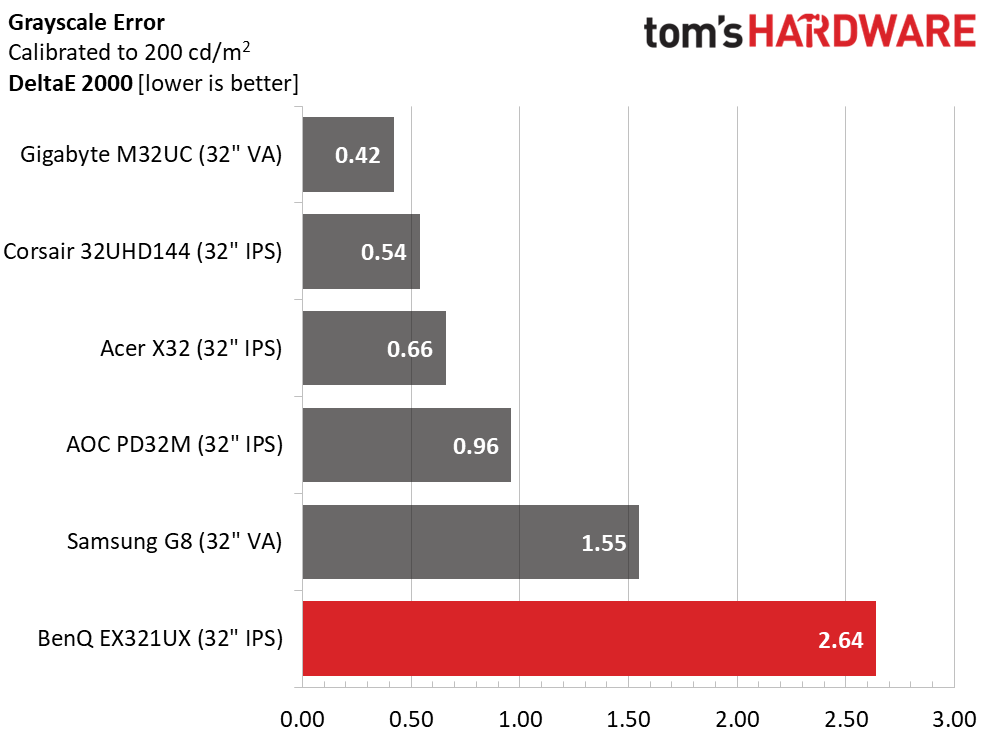
MORE:How to Choose the Best HDR Monitor
Current page:Grayscale, Gamma and Color
Christian Eberle is a Contributing Editor for Tom’s Hardware US. He’s a veteran reviewer of A/V equipment, specializing in monitors. Christian began his obsession with tech when he built his first PC in 1991, a 286 running DOS 3.0 at a blazing 12MHz. In 2006, he undertook training from the Imaging Science Foundation in video calibration and testing and thus started a passion for precise imaging that persists to this day. He is also a professional musician with a degree from the New England Conservatory as a classical bassoonist which he used to good effect as a performer with the West Point Army Band from 1987 to 2013. He enjoys watching movies and listening to high-end audio in his custom-built home theater and can be seen riding trails near his home on a race-ready ICE VTX recumbent trike. Christian enjoys the endless summer in Florida where he lives with his wife and Chihuahua and plays with orchestras around the state.

